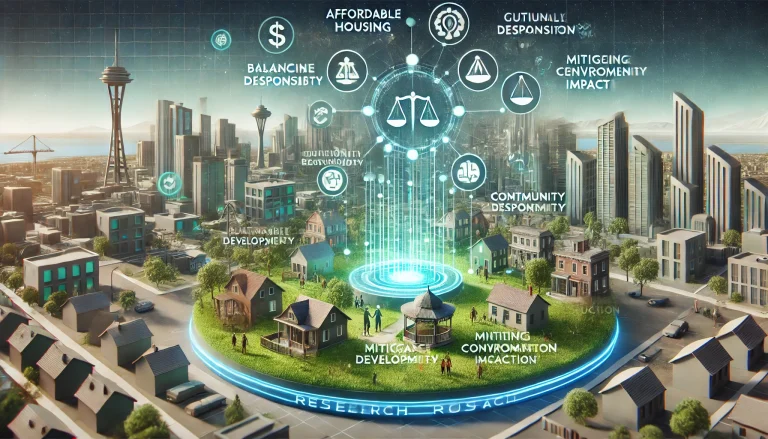
Problem Statement
Bonded labor remains a deeply entrenched issue in India, despite legal prohibitions. Many vulnerable individuals, often from marginalized communities, are coerced into exploitative labor arrangements due to debt, lack of economic opportunities, and systemic failures in enforcement. This form of modern slavery is further exacerbated by global supply chains, which indirectly sustain exploitative labor practices through demand for cheap goods and inadequate oversight.
Workers trapped in bonded labor endure inhumane conditions, low or no wages, and physical and psychological abuse, with little hope of escape due to threats, corruption, and lack of legal support. Despite various policies and international attention, enforcement remains weak, and rehabilitation efforts are insufficient.
To dismantle this system, a multi-faceted approach is required—one that includes legal reforms, corporate accountability, worker empowerment, and ethical consumerism. Addressing bonded labor demands coordinated efforts from governments, businesses, and civil society to disrupt exploitative supply chains, provide alternative livelihoods, and ensure justice for affected workers.
10 Pain Points
- Debt Trap & Exploitation – Vulnerable individuals are forced into labor due to unpaid debts with high interest rates, making escape nearly impossible.
- Poor Law Enforcement – Despite legal bans on bonded labor, weak implementation, corruption, and lack of accountability allow the system to persist.
- Brutal Working Conditions – Laborers endure physical abuse, excessive working hours, and hazardous environments with no legal protections.
- Lack of Wages & Freedom – Many bonded laborers work for little or no pay and are not allowed to leave their place of work.
- Corporate Negligence in Supply Chains – Many businesses fail to conduct due diligence, allowing bonded labor to persist in production processes.
- Absence of Rehabilitation & Support – Rescued laborers struggle to reintegrate into society due to lack of financial aid, education, and job opportunities.
- Threats & Violence – Workers and activists attempting to escape or expose bonded labor face intimidation, assault, or worse from employers and criminal networks.
- Lack of Awareness Among Consumers – Many people unknowingly purchase goods produced through exploitative labor, perpetuating demand.
- Social & Caste Discrimination – Bonded labor disproportionately affects lower-caste and marginalized communities, making systemic change harder.
- No Access to Justice – The legal process is slow and costly, preventing many bonded laborers from fighting for their rights or seeking compensation.
Key Competitors
Several organizations are actively working to combat bonded labor through rescue operations, legal aid, policy advocacy, and rehabilitation. Here are the top ones:
- International Justice Mission (IJM) – Works with local law enforcement to rescue bonded laborers, prosecute traffickers, and support survivors.
- Anti-Slavery International – One of the oldest organizations dedicated to ending modern slavery, focusing on policy change and corporate accountability.
- FREEDOM Fund – Funds frontline organizations and supports systemic change to break cycles of bonded labor.
- International Labour Organization (ILO) – Works with governments to strengthen labor laws and improve enforcement against forced labor.
- Bachpan Bachao Andolan (BBA) – Led by Nobel Laureate Kailash Satyarthi, BBA rescues children from bonded labor and provides education.
Existing Products & Services
There are various initiatives designed to address bonded labor, including technology-driven solutions and policy frameworks:
- Blockchain for Supply Chain Transparency – Companies like IBM and Everledger use blockchain to track and verify ethical labor practices.
- Ethical Certification Labels (Fair Trade, GoodWeave, etc.) – These labels certify that products (textiles, coffee, etc.) are free from forced labor.
- Worker Reporting Platforms (LaborVoices, Just Good Work) – Mobile-based systems allow workers to report exploitation anonymously.
- Rescue & Rehabilitation Apps (Forced Labour Indicators App) – Provides guidance to NGOs and law enforcement on identifying bonded labor.
- Corporate Due Diligence Tools (KnowTheChain, Verité) – Helps businesses assess and mitigate risks of bonded labor in their supply chains.
Startups & Innovations
Several startups and tech-driven initiatives are developing innovative ways to tackle bonded labor:
- Ulula – Uses mobile surveys to collect data on worker conditions in supply chains.
- AtmaGo – A community-driven social network that helps workers report labor abuses.
- BanQu – A blockchain-based financial identity platform helping laborers gain access to banking and fair employment.
- Sourcemap – Provides transparency tools for brands to map their supply chains and detect unethical labor practices.
- Traffik Analysis Hub – Uses AI and big data to detect human trafficking and labor exploitation trends.
Investments & Funding in the Anti-Slavery Sector
- Freedom Fund has invested over $100 million in bonded labor eradication programs worldwide (as of 2023).
- U.S. Department of Labor announced a $57 million initiative in 2022 to combat forced labor and child trafficking in global supply chains.
- ILO’s Global Business Network on Forced Labour brings together multinational corporations to collectively fund anti-slavery efforts.
- Tech Against Trafficking (Coalition of Microsoft, Amazon, and Salesforce) is investing in AI-driven solutions to detect forced labor.
Gaps in Existing Solutions
Despite these efforts, bonded labor remains widespread. Here are some key gaps:
- Weak Enforcement of Laws – Even with strong legal frameworks, corruption and inefficiency prevent their implementation.
- Lack of Scalable Worker Protection – Many initiatives focus on rescue but don’t provide long-term protection or alternative livelihoods.
- Limited Awareness & Consumer Action – Consumers remain unaware of bonded labor in their products, reducing pressure on businesses.
- Lack of Corporate Accountability – Many companies still rely on unethical labor but evade scrutiny due to weak regulations.
- Limited Use of AI & Big Data – While blockchain and mobile reporting exist, large-scale AI-driven monitoring of bonded labor remains underdeveloped.
Product Vision
We propose developing “FairChain AI”, an AI-powered, blockchain-integrated labor monitoring platform designed to detect, prevent, and expose bonded labor across industries.
Core Idea:
FairChain AI will provide real-time visibility into labor conditions in global supply chains using AI-driven data analysis, blockchain verification, and mobile reporting. It will empower workers, corporations, governments, and consumers to ensure ethical labor practices.
Key Features:
- AI-Powered Risk Analysis – Uses machine learning to identify supply chain risks and predict labor exploitation before it happens.
- Blockchain Verification – Ensures tamper-proof documentation of labor conditions for full transparency.
- Worker Reporting System – Allows laborers to anonymously report abuse via mobile.
- Corporate Compliance Dashboard – Helps businesses audit and ensure ethical labor practices.
- Consumer Transparency Tool – Allows consumers to scan products and verify if they are free from forced labor.
10 Use Cases for FairChain AI
- Predictive Labor Risk Alerts – AI flags high-risk suppliers before forced labor occurs.
- Smart Supply Chain Audits – Blockchain records supplier compliance, making audits more transparent.
- Worker SOS System – Laborers can send distress signals and report abuses via SMS or mobile app.
- Corporate Due Diligence Reports – Companies receive automated reports on labor conditions in their supply chain.
- Consumer Awareness App – Shoppers scan QR codes to check if a product is ethically sourced.
- Government & NGO Monitoring – Authorities access real-time bonded labor statistics for better enforcement.
- AI-Powered Investigations – The system identifies hidden labor abuses through anomaly detection in employment data.
- Rescue & Rehabilitation Coordination – Connects laborers with NGOs and legal aid in real time.
- Whistleblower Protection Hub – Ensures anonymous reporting with secure data encryption.
- Smart Contracts for Ethical Employment – Employers use blockchain-based contracts to guarantee fair wages and safe conditions.
Summary
Bonded labor remains a major human rights crisis, with millions trapped in exploitative working conditions due to debt, coercion, and weak enforcement of labor laws. Despite legal bans, global supply chains continue to rely on unethical labor practices due to inadequate monitoring, corporate negligence, and consumer unawareness.
Existing solutions, such as rescue operations and ethical certifications, have made progress but fail to prevent bonded labor at scale. Key gaps include weak law enforcement, lack of real-time supply chain transparency, and limited technological intervention.
To address this, we propose FairChain AI—an AI-powered, blockchain-integrated platform designed to detect, prevent, and expose bonded labor. The solution combines AI risk analysis to flag high-risk suppliers, blockchain-based verification to ensure tamper-proof labor contracts, and a worker reporting system for anonymous complaints. A corporate compliance dashboard helps businesses ensure ethical sourcing, while a consumer transparency tool allows shoppers to verify product origins.
With a three-phase roadmap, FairChain AI aims to launch within two years, with measurable goals such as reducing bonded labor cases by 40% in participating industries and making ethical labor practices a competitive advantage for businesses.
By leveraging cutting-edge technology and fostering accountability at every level—workers, corporations, governments, and consumers—FairChain AI provides a scalable, data-driven approach to eradicating bonded labor from global supply chains.

